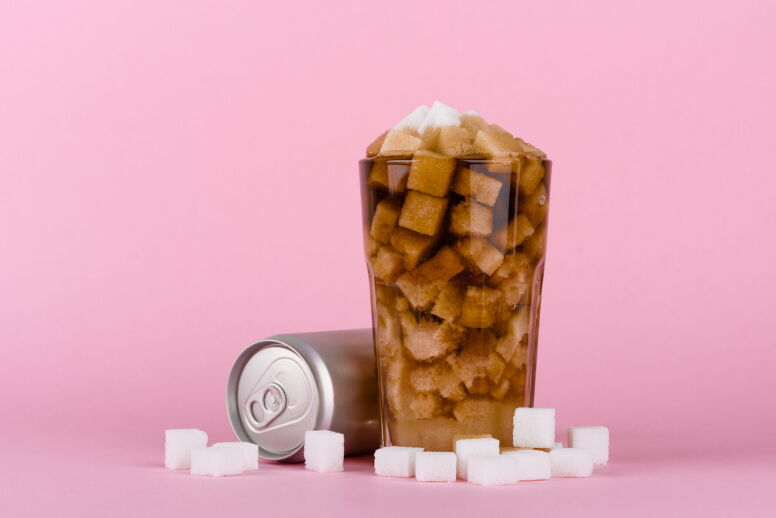News & Stories
Cutting sugar without reducing sales

Walk down the soda aisle of a grocery store and see dozens of flavors and brands in colorful packaging trying to entice you into buying them.
Although soda sales as a whole have been declining in recent years, they still are one of the biggest sources of added sugar in our diets. And excess sugar consumption is associated with a range of diseases, including type 2 diabetes, heart disease and kidney disease, among others.
Some research suggests that reducing sugar in consumer-packaged goods by 8-10% could save the U.S. more than $110 billion in healthcare costs. But where would that leave soda companies?
Kristopher Keller, a marketing professor at UNC Kenan-Flagler Business School, wondered if there might be a win-win solution.
Was there a way to improve sales for soda makers — which are driven primarily by business concerns — while also reducing how much sugar consumers buy?
He and the University of Amsterdam’s Jonne Guyt publish their findings in “A War on Sugar? Effects of Reduced Sugar Content and Package Size in the Soda Category” in the Journal of Marketing.
To find out if there was a way for soda makers to increase sales while decreasing sugar consumption, they analyzed 11 years of quarterly sales data using store scanner information from Nielsen combined with nutritional information from the firm Label Insight, examining what happened to soda sales as different products were introduced or taken off the market.
They also used a survey to gather information about the kinds of product claims promoted on soda packaging. To understand how soda sales might affect other categories of food that contain sugar, the two scholars also pulled in information from other high-sugar food groups: juices, candy and cereal.
Soda has faced a raft of new competitors in recent years: flavored waters and seltzers, athletic beverages and more. As a result, overall soda sales have declined. Keller and Guyt didn’t examine those other product categories, but they control for their impact to account for the overall decline in soda sales.
Smaller treats
Their findings support the decision in recent years for packaged food manufacturers, including soda companies, to sell their products in smaller package sizes – 7.5- or 8-oz soda cans, for example – and a shift away from using “diet” in the names of low-sugar products.
Low-sugar products, such as diet sodas, led to overall reductions in sugar consumption, Keller and Guyt found. But they didn’t help overall soda sales compared to introductions of regular sodas. In effect, low-sugar sodas cannibalize sales of higher sugar products. That might be good for consumer health, but it won’t help grow soda companies bottom lines.
But when soda makers packaged their products in smaller sizes — including “mini’ 7.5- and 8-ounce packages, and in single-serving packages instead of multipacks — sugar sales went down even as overall soda volume sales increased.
In fact, 46% of the demand for new smaller products came from outside the soda category or represents existing soda consumers buying more. Instead of smaller cans and bottles cannibalizing sales from the same brand or competitors, consumers bought more.
How is that possible? The increased purchases of smaller soda sizes were accompanied by a decreased purchase of other products with higher sugar content, resulting in lower overall sugar sales.
Consumers also seem to respond positively to marketing messages about smaller sized sodas as a treat. Messages around health that focused on sugar content, on the other hand, did not increase soda sales.
To see if consumers were purchasing more sugar products elsewhere when they reduced their consumption of sugar-laden sodas, the researchers looked at three other categories of high-sugar packaged foods: juices, candy and cereal. They found that people who purchased more of the smaller sized sodas didn’t make up for it by purchasing more in those categories.
Brand health and consumer health wins
So is there a win-win? Yes, soda makers can offer minis in full-sugar versions and increase their sales while also reducing total amount of sugar sold.
The two researchers still have questions they don’t have the data to answer. For example, they couldn’t analyze how the introduction of new products might impact overall brand profitability because they didn’t have data that allowed them to look at those.
The research could be applied to other kinds of beverages, but doesn’t apply directly to most other categories of food where manufacturers might want to reduce sugar content in response to public health concerns — so long as it doesn’t impact their sales. In beverages, sugar’s effect is primarily on taste. But in other products, the amount of sugar can also affect texture and other elements of the food, making the option of simply removing it more difficult.
Keller and Guyt interviewed a number of soda company managers to better understand the industry and how new product introductions work. They are open to the possibility of reducing the negative health impacts of their products, he said. They just need to be able to protect the brand while they do so.